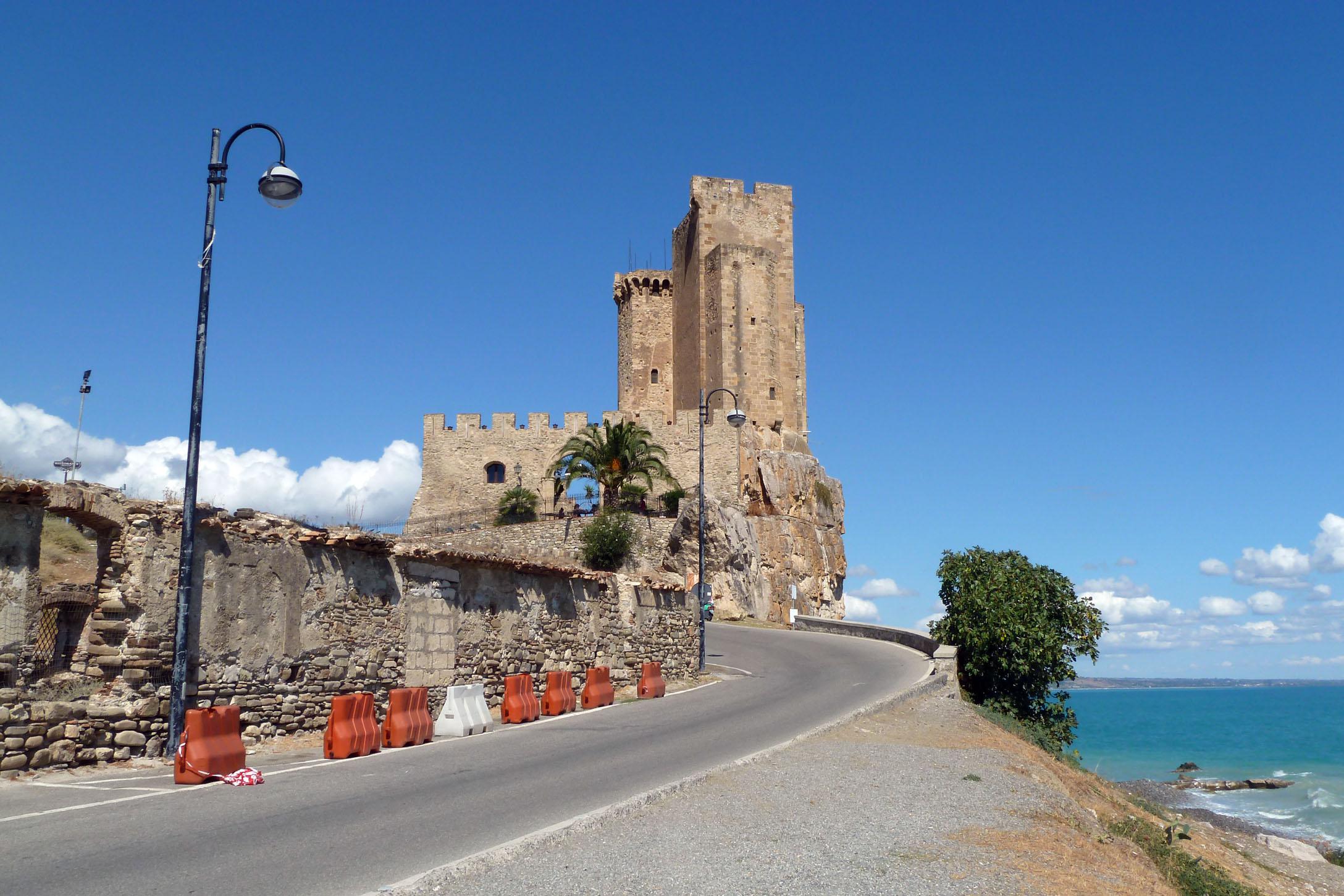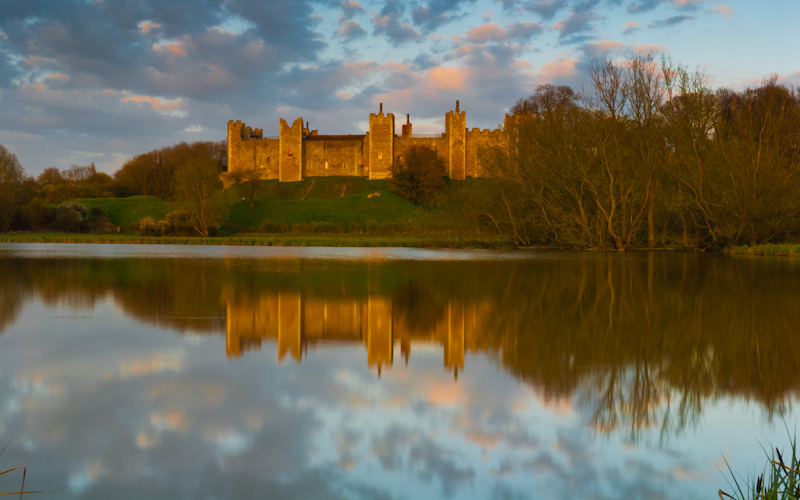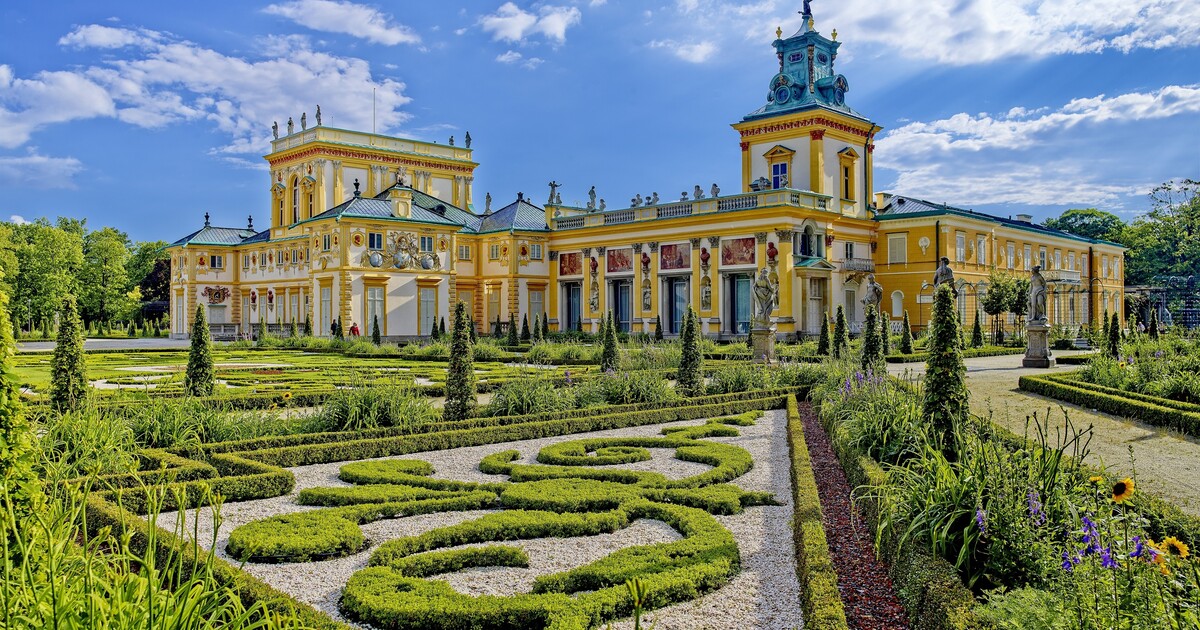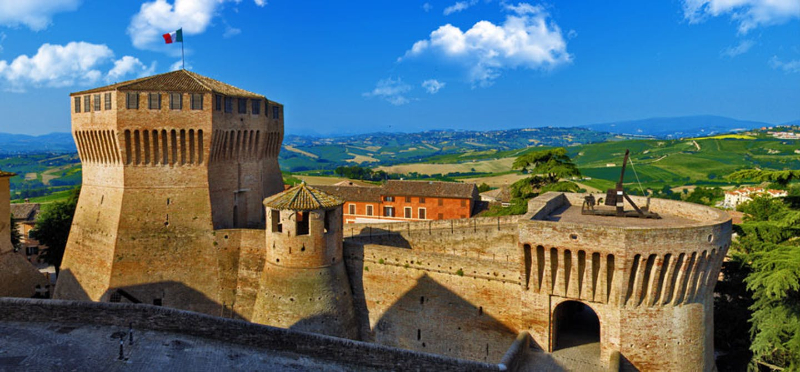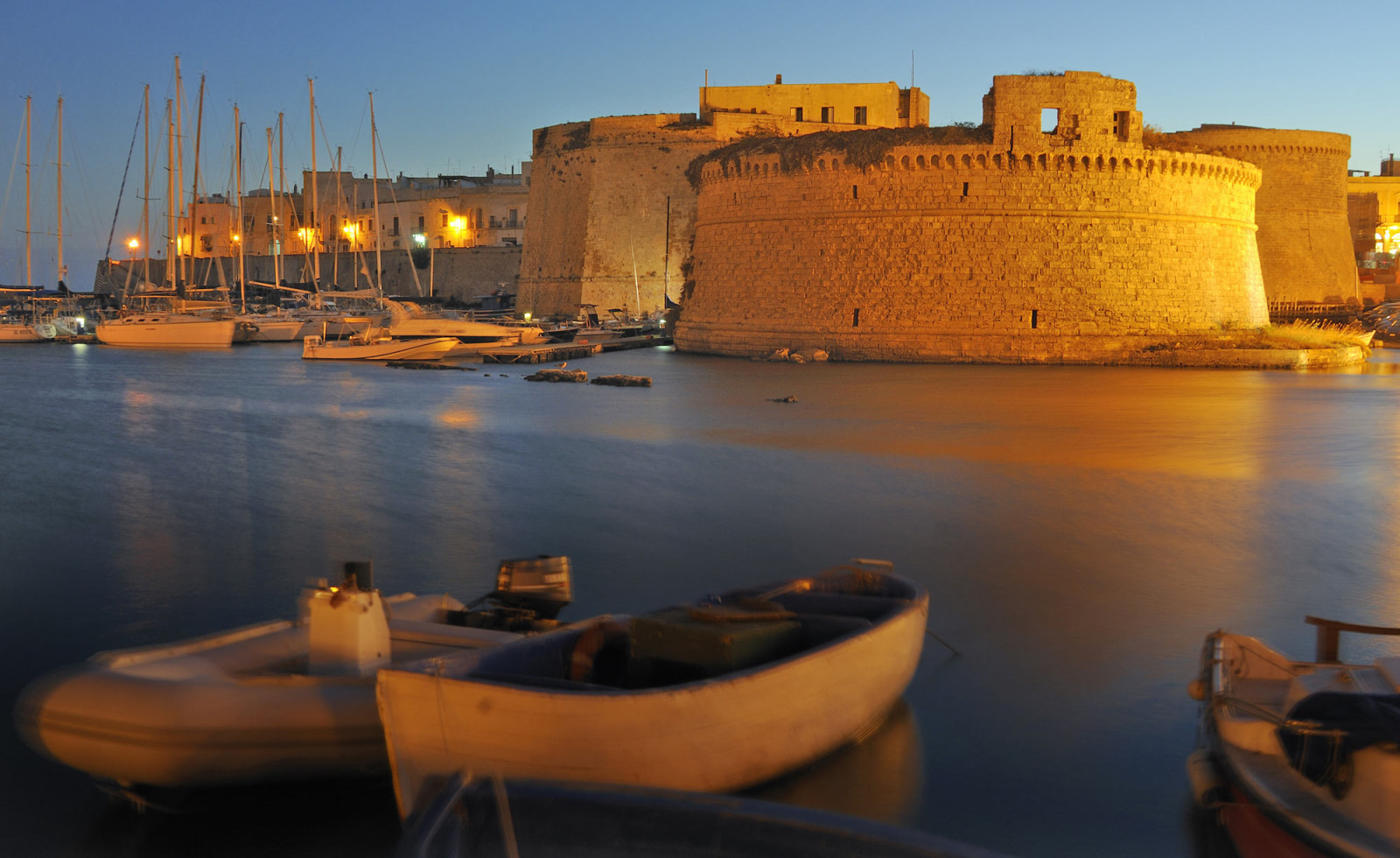The castle of Roseto Capo Spulico (Alto Ionio Cosentino), firmly implanted on the cliff that juts out toward the sea, dates back to the 10th century. In fact, as recalled by St. Vitale of Castronuovo, it was on the "Petre Roseti" that the saint is said to have founded a monastery, and in the 11th century on the ruins of the sacred building arose the "Castrum Petrae Roseti" by the Normans. At that time (1027-1154) the castle marked the boundary between the possessions of Robert Guiscard and his brother Roger I, grandfather of Constance of Altavilla (as the daughter of Roger II), the latter heir to the kingdom of Sicily and mother of Frederick II Hohenstaufen (1194-1250). In the post-Federician period, from the second half of the 13th century, it was adapted as a military fortress, so much so that from the Angevin records we know the extent of the garrison assigned to the fortress, which in 1275 turns out to consist of the castellan, a squire and twelve guards. But it is with Frederick II that the architectural artifact is included in the "Plan of the Castles" of 1230 wanted by the emperor on his return from the Sixth Crusade (1228). The same Frederick to whom the castle was very close to his heart, in his will, as reported, in "Monumenta Germaniae Historica, Legum sectio IV: Tomus II, n.274 "assigned the territory of Porta Roseti to his natural son Manfred while all the castles and especially the "Templar Petre Roseti," to his legitimate sons who would also be kings of Jerusalem. Today, after careful restoration works, it shines as a classic example of Templar-derived Frederician architecture (Barrio 1700) or Templar Fortress (D.Rotundo "Templars, Mysteries and Cathedrals." Ed.Templari-Roma 1983). The large courtyard surrounded by crenellated walls is closed by an archway bearing alchemical-Templar coats of arms such as the "Rose" and "Lilies" that make the "Castrum Petrae Roseti" a Temple of the Cistercian Order. A temple temple whose rose on the entrance channel is an alchemical symbol of the religious-military order of the Ishmaelites and Rosicrucians. Recently, to complete the historical investigation based on the Tsarist Archives there is news that, in the castle was kept, by Frederick II the Holy Shroud. This discovery is corroborated by the studies of Lapicides of the castle, which led to the reading of the "Griffin," which belonged to Frederick II and, to the "Seal of Solomon" which reproduces that of the time of Jerusalem.
